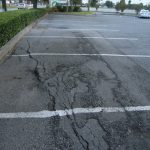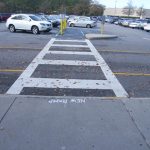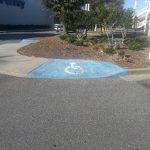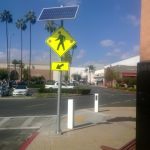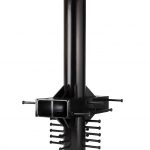In addition to the paint color to identify the utilities line. The utility locator will use several symbols to identify the type of buried utility line. These range from simple pipelines to ducts housing several lines for the same utility. The combination of colors and symbol will help you identify the utilities […]
Author Archive: Thomas Zimmer
Utilities: Marking Colors
The paint colors used to mark utilities lines is presented above. Six of the eight colors identify utility pipelines. Red: electric power lines, cables, conduit, and lighting cables Orange: telecommunication, alarm or signal lines, cables, or conduit Yellow: natural gas, oil, steam, petroleum, or other flammables Green: sewers and drain […]
Utilities: Ready to Dig? Start with 811
The utilities going into your home are the same as those going into a shopping center. There is gas, water, electric, and sanitary sewer pipes between your residence to the public right of way. Typically, the homeowner is responsible for the utility line between the meter or valve and the […]
Pavement Performance: Tree Roots
At mature shopping center properties, certain tree varieties will have root propagation between the pavement surface layer and the base course. If this is a one-off situation, our first solution is to surface mill the asphalt concrete layer and pave over the roots. This has a life of four to […]
Accessibility: Parallel Curb Ramps
Even when detailed plans are provided and there is a project walk through, we find curb ramps are still incorrectly installed. At this installation, the ramp center should be flat (less than 2% slope). A flat area is necessary to allow for a wheelchair turning or maneuvering area. It is […]
Accessibility: When was the Curb Ramp Going to be Constructed?
We often see crosswalks ending at impassible curbed islands or at sidewalks without curb ramps. In this photograph we see accessible parking stalls which appear to be level and with an accessible route to the building. Surprisingly, a curb ramp has never been installed. As part of a pavement rehabilitation […]
Accessibility: A Long & Winding Route From A Bus Stop
We were at a mall with a series of short sidewalks with curb ramps connecting a bus stop with the shopping center building. It is inaccessible because the ramps are noncompliant, and the sidewalks between the ramps have cross-slopes greater than 2.1%. The sidewalk also gives the appearance of forcing […]
Signaled Crosswalks Also Known As Mid-Block Crosswalks
A few years ago, we designed and had a signaled crosswalk installed at a crosswalk “hidden” by curves in the fire lane. This is a “deluxe” installation and is most often seen at midblock crosswalks on busy urban streets. The first photograph shows a solar-powered, lighted sign and crosswalk. The […]
Accessibility: Don’t Create a Skate Park
Contractors leveling accessible parking stalls often use Portland cement concrete because the pavement elevations can be more precisely set with forms instead of using a paver placing hot mix asphalt concrete. With either material, the slope from the accessible stalls must be gradually tapered to the existing pavement, otherwise a […]
Bollards: Are They Crash Rated?
I recently watched a very interesting webinar presentation about bollard crash rating developed by the US Department of State after 9/11. Reliance Foundry (https://www.reliance-foundry.com/bollard#gref) presented the webinar. Bollards are rated for their crash resistance at various speeds and how well they stop a semi-tractor with a trailer after possibly overrunning […]



